The Soviet State and Heritage Policies
Anna Gaynutdinova
The objective of this short series is to trace the origins and the subsequent evolution of the conceptualization of cultural heritage that underpins its contemporary definitions and conservation practices in Russia. This exploration, undertaken with a degree of caution, can be seen as an examination of “ideological imperialism,” given the prominent and enduring role ideology (or its substitution) has played in shaping the discourse surrounding heritage, a legacy extending back to the Soviet Union.
The first part of the series is devoted to the conceptualization of heritage during the Soviet era so as to provide a concise exposition of the defining features of that approach, which remains relevant in the contemporary context.
The first part of the series is devoted to the conceptualization of heritage during the Soviet era so as to provide a concise exposition of the defining features of that approach, which remains relevant in the contemporary context.

The North River Terminal under restoration. Courtesy of Denis Esakov, 2018.
The practice of heritage protection emerged in Russia comparatively early. The first legislation pertaining to the collection, cataloguing, and preservation of rarities, including ancient written documents, as well as antiquities, particularly archaeological artefacts, was passed during the reign of Peter the Great in the early 18th century. During this early era, the entire discourse surrounding heritage rendered it as something exceptional, rare, ancient, and valuable, akin to “treasure.” It was seen as needing conservation, safeguarding, and care. These ideas were imported onto Russian soil by Peter the Great from Western Europe and reflected the Western projection of their understanding, unfortunately, without due consideration for the existing ones (for more details, see e.g. Gorshenina & Tolz 2016).
Before the 18th century, in the central, so-called European, part of Russia, a different approach to heritage prevailed. Here, the emphasis was less on preserving the physical objects and more on their intangible aspects, like purpose, spiritual significance, or sacred qualities. An excellent example of this can be seen in the old tradition of Orthodox icon reproduction. Their copies, produced in a certain way, could embody all the qualities of the original, including their miraculous aspects and, therefore, serve as a substitute for the original if it was damaged (that is precisely why there are several copies of the same sacred icons all of which were considered genuine). Even more distinct from the Western concept of heritage were the perspectives of indigenous peoples and cultures in the southern, eastern, northern and northeastern regions of the Russian empire. These perspectives were characterized by the absence of the conventional Western dichotomy between nature and culture, a lack of focus on material values, and on a conservative approach to preservation (see e.g. Gorshenina & Tolz 2016; Slezkine 1994). Nevertheless, it was the projection of European-centered understanding of heritage that laid the foundation for the heritage discourse in Russia and shaped the subsequent development of heritage-related categories.
Before the 18th century, in the central, so-called European, part of Russia, a different approach to heritage prevailed. Here, the emphasis was less on preserving the physical objects and more on their intangible aspects, like purpose, spiritual significance, or sacred qualities. An excellent example of this can be seen in the old tradition of Orthodox icon reproduction. Their copies, produced in a certain way, could embody all the qualities of the original, including their miraculous aspects and, therefore, serve as a substitute for the original if it was damaged (that is precisely why there are several copies of the same sacred icons all of which were considered genuine). Even more distinct from the Western concept of heritage were the perspectives of indigenous peoples and cultures in the southern, eastern, northern and northeastern regions of the Russian empire. These perspectives were characterized by the absence of the conventional Western dichotomy between nature and culture, a lack of focus on material values, and on a conservative approach to preservation (see e.g. Gorshenina & Tolz 2016; Slezkine 1994). Nevertheless, it was the projection of European-centered understanding of heritage that laid the foundation for the heritage discourse in Russia and shaped the subsequent development of heritage-related categories.

A ceramic panel from the façade of the North River Terminal, built in 1937, Moscow. Courtesy of Andrey Dvornikov, 2018.
From Chaos to Ideological Control
While concerns about heritage in Russia appeared relatively early, prior to the 1917 October Revolution there was no established legal framework for its definition or protection, nor were there standardized approaches to its preservation. The Bolsheviks, however, who considered heritage “a strong political instrument” for grounding the legitimacy of their power (Deschepper 2019, 492), started to pass heritage-related legislation mere months after seizing power. Still, the systematic conceptualization of heritage underwent several stages of development.
The first stage emerged in the first years after the Revolution and was characterized by a “conservation-destruction dialectic,” concurrent with the chaotic and devastating destruction of certain monuments and the unimpeachable preservation of others (Deschepper 2019, 492). One notable example of this dialectic is the Cathedral of Our Lady of Kazan, located near Red Square in Moscow. Between 1925 and 1932, it underwent thorough restoration while simultaneously hundreds of other churches, cathedrals, shrines, temples and mosques in Moscow and throughout the country were being demolished. In 1936, despite all attempts to prevent it, the Kazan Cathedral itself was also razed as the main square was prepared for military parades.
In the 1920s, the next stage unfolded with the “incorporation” of the heritage of the past expressed in its appropriation, assimilation and subsequent re-signification according to the new ideological criteria. In the 1930s, the stroke of heritage conceptualization further addressed a “link between revolution, future, and eternity” (Deschepper 2019, 492) by creating a new Soviet heritage for the Communist future in the present.
While concerns about heritage in Russia appeared relatively early, prior to the 1917 October Revolution there was no established legal framework for its definition or protection, nor were there standardized approaches to its preservation. The Bolsheviks, however, who considered heritage “a strong political instrument” for grounding the legitimacy of their power (Deschepper 2019, 492), started to pass heritage-related legislation mere months after seizing power. Still, the systematic conceptualization of heritage underwent several stages of development.
The first stage emerged in the first years after the Revolution and was characterized by a “conservation-destruction dialectic,” concurrent with the chaotic and devastating destruction of certain monuments and the unimpeachable preservation of others (Deschepper 2019, 492). One notable example of this dialectic is the Cathedral of Our Lady of Kazan, located near Red Square in Moscow. Between 1925 and 1932, it underwent thorough restoration while simultaneously hundreds of other churches, cathedrals, shrines, temples and mosques in Moscow and throughout the country were being demolished. In 1936, despite all attempts to prevent it, the Kazan Cathedral itself was also razed as the main square was prepared for military parades.
In the 1920s, the next stage unfolded with the “incorporation” of the heritage of the past expressed in its appropriation, assimilation and subsequent re-signification according to the new ideological criteria. In the 1930s, the stroke of heritage conceptualization further addressed a “link between revolution, future, and eternity” (Deschepper 2019, 492) by creating a new Soviet heritage for the Communist future in the present.

Moscow, VDNKh, Central pavilion from the roof of Armenia pavilion.
The culmination of this process occurred in the 1960s and 1970s. At that time, on the one hand, the policies reached their culmination as a means of affirming the ideological role of heritage; on the other hand, the display of exemplary conservations and achievements of heritage experts, such as the paradigmatic conservation of the historical towns of Vladimir and Suzdal’, played a pivotal role. These towns, after their restoration, emerged as prime destinations, showcased to foreign tourists. These combined efforts by experts and heritage practitioners were used to create a positive image and raise the prestige of the Soviet state in the international arena, particularly in interactions with Western countries (Bekus 2020).
Bolshevik Ideology in Shaping Heritage Conservation Practices
The Bolsheviks’ heritage policies were shaped by two important and somewhat contrasting features of their ideology. Firstly, they viewed the Russian Revolution as a historically necessary and logical outcome of a continuous process of societal and political development. Secondly, the Bolsheviks wanted to break from the past and focus entirely on building a Communist future. They looked at everything, including history, through the lens of how it could contribute or hinder the goal of creating a new civilization and society. This approach inevitably led to distinguishing historical continuity as “desirable,” meaning that which supported the Bolsheviks’ ideas about society’s progress, or “wrong” or “negative,” meaning that which questioned these ideas and had to be contained and disregarded.
This made heritage very closely intertwined with historiography, over which the Communist leadership exerted total control, aiming to expose “desirable” historical continuity through the “correct” understanding of the past. Thus, the mechanism of heritage conceptualization consisted of the appropriation of heritage from previous periods and its infusion with new interpretations informed by ideology to ensure “desirable” historical continuity.
In practice, this conceptualizing mechanism resulted in everything that belonged to ancient times being considered valuable, “heritagized”, assimilated, and appropriated by the Soviet regime. According to the decree of Narkompros as early as 1918, everything that belongs to history, i.e. the “past,” and culture, i.e. “art” (the houses and collections of nobles in the first place, but even churches, which later were considered “ideologically alien”), was rendered as “monuments belonging to the working people,” i.e. heritage. Subsequently, this “mass” underwent the process of “re-signification:” it was stripped of components that conveyed capitalist, aristocratic, or Orthodox values and assigned a new social and interpretative identity according to entirely new social and aesthetic criteria, to align with the new ideological system and corresponding interpretation of history. As it was done, for example, with the monument originally erected in the 1870s to honor the defenders of the town of Kungur against the rebellious peasants led by Emelian Pugachev, which underwent a major resignification in 1923, when it was renamed to honor the peasants who had fought against serfdom and became one of the sites for commemorating Pugachev himself.
Authenticity as Ideological Framework
However, the most intriguing aspect was the distinction between “proper” and “improper” heritage, where the concept of authenticity, entirely informed by ideology, served as the yardstick for assessments. “Proper” heritage, that which conveyed “desirable historical continuity,” was considered authentic, in contrast to “improper” heritage, which was regarded as false. The ranks of proper and authentic heritage, for instance, included monuments of the people’s struggle against oppressors (e.g. places of the first workers’ strikes, or sites associated with the names of new heroes who had fought against tsarism in the past, like Emelian Pugachev), as well as sites associated with famous revolutionaries and ideologists of the Revolution (e.g. Lenin, Herzen, etc.). Palaces and famous collections were declared the “people’s patrimony,” with access to them open to everyone, and were used to educate working people and promote the ideas of Communism.
On the other hand, “absolutely untrue” heritage, characterized as “survivals of the old system” (Baller 1984, 59) and associated with “negative” historical continuity (63), was to be completely disregarded by the new Communist society – either destroyed or abandoned. This was the fate of religious and cult monuments (hundreds of thousands of such structures were turned into cattle barns, granaries, and cinemas or simply destroyed), as well as the so-called “bourgeois heritage,” which could not be adapted to the functions of educating the working people (for example, the houses of the nobility, which were masterpieces of architecture and art, were turned into communal flats propagating communal lifestyles). Thus, as González (2016) emphasized, the main purpose of heritage was to inculcate ideology and contribute to the creation of a “new man” and a new civilization.
However, the pinnacle of the process of conceptualizing heritage in the Soviet period was not the infusion of “already existed” and “incorporated” heritage with re-signified meaning, but rather the creation of an entirely new heritage that, from its inception, would imbue the ideology and contribute to the building of the Communist future. The comprehensive project to construct the Moskva-Volga Canal, entirely through the forced labor of Gulag prisoners, perfectly exemplified this concept. It realized the idea of conquering space and nature, propagated a vision of a prosperous future for the working class, and encompassed the rehabilitation of those who supposedly opposed this future into new, “proper” Soviet citizens by subjecting them to grueling forced labor. For this “newly created heritage” (Baller 1984, 66) the Soviet state compulsively fashioned a stylistic framework, which in visual and plastic arts (such as painting, sculpture, film, and photography) was commonly referred to as “Socialist Realism” and the “Stalinist Empire style” in architecture. Whereas the former meant to erase the boundary between reality and its representation (Groys 1994, 159), the latter intended to mix pseudo-historical “classical” styles, symbolically and visually linked the Soviet state to the great empires of the past and ensure “desirable historical continuity.”
Bolshevik Ideology in Shaping Heritage Conservation Practices
The Bolsheviks’ heritage policies were shaped by two important and somewhat contrasting features of their ideology. Firstly, they viewed the Russian Revolution as a historically necessary and logical outcome of a continuous process of societal and political development. Secondly, the Bolsheviks wanted to break from the past and focus entirely on building a Communist future. They looked at everything, including history, through the lens of how it could contribute or hinder the goal of creating a new civilization and society. This approach inevitably led to distinguishing historical continuity as “desirable,” meaning that which supported the Bolsheviks’ ideas about society’s progress, or “wrong” or “negative,” meaning that which questioned these ideas and had to be contained and disregarded.
This made heritage very closely intertwined with historiography, over which the Communist leadership exerted total control, aiming to expose “desirable” historical continuity through the “correct” understanding of the past. Thus, the mechanism of heritage conceptualization consisted of the appropriation of heritage from previous periods and its infusion with new interpretations informed by ideology to ensure “desirable” historical continuity.
In practice, this conceptualizing mechanism resulted in everything that belonged to ancient times being considered valuable, “heritagized”, assimilated, and appropriated by the Soviet regime. According to the decree of Narkompros as early as 1918, everything that belongs to history, i.e. the “past,” and culture, i.e. “art” (the houses and collections of nobles in the first place, but even churches, which later were considered “ideologically alien”), was rendered as “monuments belonging to the working people,” i.e. heritage. Subsequently, this “mass” underwent the process of “re-signification:” it was stripped of components that conveyed capitalist, aristocratic, or Orthodox values and assigned a new social and interpretative identity according to entirely new social and aesthetic criteria, to align with the new ideological system and corresponding interpretation of history. As it was done, for example, with the monument originally erected in the 1870s to honor the defenders of the town of Kungur against the rebellious peasants led by Emelian Pugachev, which underwent a major resignification in 1923, when it was renamed to honor the peasants who had fought against serfdom and became one of the sites for commemorating Pugachev himself.
Authenticity as Ideological Framework
However, the most intriguing aspect was the distinction between “proper” and “improper” heritage, where the concept of authenticity, entirely informed by ideology, served as the yardstick for assessments. “Proper” heritage, that which conveyed “desirable historical continuity,” was considered authentic, in contrast to “improper” heritage, which was regarded as false. The ranks of proper and authentic heritage, for instance, included monuments of the people’s struggle against oppressors (e.g. places of the first workers’ strikes, or sites associated with the names of new heroes who had fought against tsarism in the past, like Emelian Pugachev), as well as sites associated with famous revolutionaries and ideologists of the Revolution (e.g. Lenin, Herzen, etc.). Palaces and famous collections were declared the “people’s patrimony,” with access to them open to everyone, and were used to educate working people and promote the ideas of Communism.
On the other hand, “absolutely untrue” heritage, characterized as “survivals of the old system” (Baller 1984, 59) and associated with “negative” historical continuity (63), was to be completely disregarded by the new Communist society – either destroyed or abandoned. This was the fate of religious and cult monuments (hundreds of thousands of such structures were turned into cattle barns, granaries, and cinemas or simply destroyed), as well as the so-called “bourgeois heritage,” which could not be adapted to the functions of educating the working people (for example, the houses of the nobility, which were masterpieces of architecture and art, were turned into communal flats propagating communal lifestyles). Thus, as González (2016) emphasized, the main purpose of heritage was to inculcate ideology and contribute to the creation of a “new man” and a new civilization.
However, the pinnacle of the process of conceptualizing heritage in the Soviet period was not the infusion of “already existed” and “incorporated” heritage with re-signified meaning, but rather the creation of an entirely new heritage that, from its inception, would imbue the ideology and contribute to the building of the Communist future. The comprehensive project to construct the Moskva-Volga Canal, entirely through the forced labor of Gulag prisoners, perfectly exemplified this concept. It realized the idea of conquering space and nature, propagated a vision of a prosperous future for the working class, and encompassed the rehabilitation of those who supposedly opposed this future into new, “proper” Soviet citizens by subjecting them to grueling forced labor. For this “newly created heritage” (Baller 1984, 66) the Soviet state compulsively fashioned a stylistic framework, which in visual and plastic arts (such as painting, sculpture, film, and photography) was commonly referred to as “Socialist Realism” and the “Stalinist Empire style” in architecture. Whereas the former meant to erase the boundary between reality and its representation (Groys 1994, 159), the latter intended to mix pseudo-historical “classical” styles, symbolically and visually linked the Soviet state to the great empires of the past and ensure “desirable historical continuity.”

An example of the Social Realism style: Aleksandr Deineka (1899—1969). Moscow, Stakhanovtsy. A sketch for a panel at the international Paris exhibition, 1937. Courtesy of Tver Regional Art Gallery.
The Soviet Paradigm of Heritage Ranking
The idea of heritage – projecting the “Western” concept of its understanding (as ancient, rare, unique, monumental, and aesthetically pleasing) adjusted to fit the new ideology – was reflected in both the definition of cultural heritage already codified in early Bolshevik legislation and the development of a hierarchy of heritage. According to these legal stipulations, as early as 1918 valuable heritage assets that were considered important for conservation were categorized as manifestations of architecture (monumental heritage expression), art (plastic arts) and past (antiquity).
Consequently, the historical and artistic values of heritage, or rather its ability to convey “desirable” historical continuity and aesthetic pleasantness, were prioritized and overshadowed all others. The developed hierarchy was based on two essential criteria: the rank of “authenticity” (an ideological criterion) and age/rarity (a criterion of uniqueness). The highest rank of heritage was referred to as unik (a shortened version of the term unikal’ny, or “unique”), which entitled properties to the highest level of protection and encompassed the rarest and most ancient properties (Poliakova 2005, 61), as well as so-called “Revolutionary monuments” that had some connection to revolutionary events or personalities. In the 1960s, this rank was expanded to include “newly created” Soviet heritage monuments (such as Barkhin’s Izvestia Headquarters, constructed in 1925-1927). Meanwhile, other historical properties, the less ancient or rare they were, were assigned lower ranks in the hierarchy.
For instance, historical housing in city centers, which inherently embodies a place’s authentic character and was crucial for preserving the genuine essence of it, was largely undervalued. These structures could only be conserved by attaching to them, often with little substantiation, associations with revolutionary figures. In Vologda, for instance, a distinctive neighborhood featuring wooden buildings was safeguarded by linking it to the exile of Lenin’s sister, Maria Ulyanova. Similarly, in Moscow, many of the grand mansions that epitomize its unique architectural style were associated with Lenin himself (who purportedly delivered speeches or held meetings in various buildings) or with other revered figures from the Communist pantheon, such as Pushkin.
The fact that the ideological filter played a decisive role in assigning a property a particular rank in the hierarchy also demonstrated that the defining characteristic of the Soviet heritage discourse was its inner contrariety. This became most apparent when comparing objects that fell on opposite ends of the spectrum in terms of criterion values, with a premium being put on ideological importance and uniqueness being discounted, and vice versa. For example, Orthodox churches, deemed “class-alien” regardless of their age or rarity with very few exceptions, had no chance of being recognized as belonging to the unik rank of heritage within the Soviet heritage discourse, especially in the earlier stage of its development. In stark contrast, the “newly created” Soviet monuments were assigned the highest rank in the national register solely due to ideological criteria.
The idea of heritage – projecting the “Western” concept of its understanding (as ancient, rare, unique, monumental, and aesthetically pleasing) adjusted to fit the new ideology – was reflected in both the definition of cultural heritage already codified in early Bolshevik legislation and the development of a hierarchy of heritage. According to these legal stipulations, as early as 1918 valuable heritage assets that were considered important for conservation were categorized as manifestations of architecture (monumental heritage expression), art (plastic arts) and past (antiquity).
Consequently, the historical and artistic values of heritage, or rather its ability to convey “desirable” historical continuity and aesthetic pleasantness, were prioritized and overshadowed all others. The developed hierarchy was based on two essential criteria: the rank of “authenticity” (an ideological criterion) and age/rarity (a criterion of uniqueness). The highest rank of heritage was referred to as unik (a shortened version of the term unikal’ny, or “unique”), which entitled properties to the highest level of protection and encompassed the rarest and most ancient properties (Poliakova 2005, 61), as well as so-called “Revolutionary monuments” that had some connection to revolutionary events or personalities. In the 1960s, this rank was expanded to include “newly created” Soviet heritage monuments (such as Barkhin’s Izvestia Headquarters, constructed in 1925-1927). Meanwhile, other historical properties, the less ancient or rare they were, were assigned lower ranks in the hierarchy.
For instance, historical housing in city centers, which inherently embodies a place’s authentic character and was crucial for preserving the genuine essence of it, was largely undervalued. These structures could only be conserved by attaching to them, often with little substantiation, associations with revolutionary figures. In Vologda, for instance, a distinctive neighborhood featuring wooden buildings was safeguarded by linking it to the exile of Lenin’s sister, Maria Ulyanova. Similarly, in Moscow, many of the grand mansions that epitomize its unique architectural style were associated with Lenin himself (who purportedly delivered speeches or held meetings in various buildings) or with other revered figures from the Communist pantheon, such as Pushkin.
The fact that the ideological filter played a decisive role in assigning a property a particular rank in the hierarchy also demonstrated that the defining characteristic of the Soviet heritage discourse was its inner contrariety. This became most apparent when comparing objects that fell on opposite ends of the spectrum in terms of criterion values, with a premium being put on ideological importance and uniqueness being discounted, and vice versa. For example, Orthodox churches, deemed “class-alien” regardless of their age or rarity with very few exceptions, had no chance of being recognized as belonging to the unik rank of heritage within the Soviet heritage discourse, especially in the earlier stage of its development. In stark contrast, the “newly created” Soviet monuments were assigned the highest rank in the national register solely due to ideological criteria.

Lock # 8 on the Moscow Canal, built in 1932-1937. Courtesy of Denis Esakov, 2018.
Cementing Heritage Practices Through International Engagements
Notably, the whole landscape of heritage preservation underwent profound transformations in the late 1960s and 1970s. These changes were marked by a significant shift toward heritage preservation in the Soviet Union, which found resonance among both professionals and the public.
The engagement of the public with heritage led to the emergence of a powerful social movement advocating monument preservation, gaining considerable momentum in the 1970s. The effects of this movement introduced a new actor to the heritage conservation field, a development of great importance for subsequent periods that will be discussed in the next publication.
The transformation in expert circles was characterized by the active engagement of Soviet heritage professionals with international organizations like ICOMOS and ICCROM. This engagement had a profound impact on heritage conservation practices within the country and elevated the nation’s prestige in the international arena. It is hardly a surprise that, after decades of isolation, the first international doctrinal document regarding heritage introduced to the Soviet professional community — the Venice Charter — was received with the kind of enthusiasm that no other such document has seen since. The Venice Charter, however, is widely considered (see e.g. Logan 2004, Smith 2006) one of the “canonical texts” conveying a “Western” perspective of understanding the idea of heritage. It strongly advocates a conservation ethic, a museological approach, the interpretation of heritage values as primarily embedded in the fabric, and the complete subordination of the use and management of a heritage place to these aspects.
The influence of international engagement and the ideas presented in the major doctrinal document of that era, transmitted through the expert community, culminated in the ultimate consolidation of the “Western” projection as the singular framework for understanding cultural heritage. Consequently, the question of a possible alternative interpretation of the nature of cultural heritage definitively disappeared from the Soviet heritage discourse.
Conclusion
The Soviet state developed a distinct concept of heritage with identifiable characteristics, along with well-defined methods of interaction. Clearly, the Soviet heritage discourse, while inheriting the main aspects of the Western projection of heritage, had a very heavy slant toward ideology that informed all its features – in particular, a tendency toward heavy politicization of heritage, its subordination to propaganda, and its tight link to historiography, over which the Soviet state established total control.
Moreover, during the Soviet era, the state effectively imposed its concept of heritage across the entire nation, asserting dominance over all regional heritage discourses, often with the assistance of expert communities. While some degree of interpretational freedom regarding local heritage ideas existed in the Soviet republics, as noted by Bekus (2020), the same cannot be said for Soviet Russia. This trend of subordinating local and regional heritage concepts to a single, authorized federal discourse persisted well into the 21st century, particularly beginning with the rise of Vladimir Putin on the political scene, which was marked by “multiple reinvestments of the Soviet-era heritage” (Deshepper 2018, 88). These and other aspects of this new era will be explored in the next memo.
Notably, the whole landscape of heritage preservation underwent profound transformations in the late 1960s and 1970s. These changes were marked by a significant shift toward heritage preservation in the Soviet Union, which found resonance among both professionals and the public.
The engagement of the public with heritage led to the emergence of a powerful social movement advocating monument preservation, gaining considerable momentum in the 1970s. The effects of this movement introduced a new actor to the heritage conservation field, a development of great importance for subsequent periods that will be discussed in the next publication.
The transformation in expert circles was characterized by the active engagement of Soviet heritage professionals with international organizations like ICOMOS and ICCROM. This engagement had a profound impact on heritage conservation practices within the country and elevated the nation’s prestige in the international arena. It is hardly a surprise that, after decades of isolation, the first international doctrinal document regarding heritage introduced to the Soviet professional community — the Venice Charter — was received with the kind of enthusiasm that no other such document has seen since. The Venice Charter, however, is widely considered (see e.g. Logan 2004, Smith 2006) one of the “canonical texts” conveying a “Western” perspective of understanding the idea of heritage. It strongly advocates a conservation ethic, a museological approach, the interpretation of heritage values as primarily embedded in the fabric, and the complete subordination of the use and management of a heritage place to these aspects.
The influence of international engagement and the ideas presented in the major doctrinal document of that era, transmitted through the expert community, culminated in the ultimate consolidation of the “Western” projection as the singular framework for understanding cultural heritage. Consequently, the question of a possible alternative interpretation of the nature of cultural heritage definitively disappeared from the Soviet heritage discourse.
Conclusion
The Soviet state developed a distinct concept of heritage with identifiable characteristics, along with well-defined methods of interaction. Clearly, the Soviet heritage discourse, while inheriting the main aspects of the Western projection of heritage, had a very heavy slant toward ideology that informed all its features – in particular, a tendency toward heavy politicization of heritage, its subordination to propaganda, and its tight link to historiography, over which the Soviet state established total control.
Moreover, during the Soviet era, the state effectively imposed its concept of heritage across the entire nation, asserting dominance over all regional heritage discourses, often with the assistance of expert communities. While some degree of interpretational freedom regarding local heritage ideas existed in the Soviet republics, as noted by Bekus (2020), the same cannot be said for Soviet Russia. This trend of subordinating local and regional heritage concepts to a single, authorized federal discourse persisted well into the 21st century, particularly beginning with the rise of Vladimir Putin on the political scene, which was marked by “multiple reinvestments of the Soviet-era heritage” (Deshepper 2018, 88). These and other aspects of this new era will be explored in the next memo.
Narkompros or the People’s Commissariat for Education (Narodny Kommissariat Prosveshchenia) was the government agency responsible for education and culture in the early Soviet Union, particularly during the early years following the Russian Revolution of 1917.
Emelian Pugachev (1742–1775) led a major rebellion against Russia’s rulers during the late 18th century. He claimed to be Tsar Peter III and sought to challenge the oppressive rule of Catherine the Great. Pugachev’s Rebellion (1773–1775) mobilized peasants and Cossacks in a fight against the ruling elite. However, the uprising was ultimately crushed, leading to Pugachev’s capture and execution in 1775.
Pushkin’s works were seen by the Bolsheviks as embodying the spirit of the Russian people, making him an appealing symbol for the new Soviet state. Additionally, his advocacy for social and political reform in his writings aligned with some of the early ideals of the Revolution, especially in the period when the Bolsheviks sought to gain popular support. Moreover, Pushkin’s cultural significance and the universality of his themes made him a useful tool for legitimizing the Bolshevik regime and bolstered its cultural and intellectual appeal – by embracing Pushkin, the Bolsheviks could present themselves as both inheritors of a rich cultural heritage and agents of change.
Ėleazar Aleksandrovich Baller, Communism and Cultural Heritage. (Moscow: Progress, 1984).
Nelly Bekus, “Transnational circulation of cultural form: multiple agencies of heritage making,” International Journal of Heritage Studies, 26.12 (2020): 1148-1165, doi: 10.1080/13527258.2019.1652922.
Julie Deschepper, “Le ‘Patrimoine Soviétique’ de l’URSS à la Russie contemporaine: généalogie d’un concept” [‘Soviet Heritage’ from the USSR to Contemporary Russia: Genealogy of a Concept]. Vingtième Siècle. Revue D’histoire 137 (2018): 77–98.
Julie Deschepper, “Between Future and Eternity: a Soviet Conception of Heritage,” International Journal of Heritage Studies, 25, no. 5 (2019): 491-506. doi: 10.1080/13527258.2018.1467949
Pablo Alonso González, “Communismand Cultural Heritage: The Quest for Continuity.” International Journal of Heritage Studies, 22 no. 9 (2016): 653–663. doi: 10.1080/13527258.2016.1184701
Svetlana Gorshenina & Vera Tolz, “Constructing Heritage in Early Soviet Central Asia: The Politics of Memory in a Revolutionary Context.” Ab Imperio, 2016, no. 4 (2016): 77-115.
Boris Groys, The total art of Stalinism: Avant-Garde, aesthetic dictatorship, and beyond. Translated by Charles Rougle. (Prinston, New Jersey: Prinston University Press, 1992). Originally published in German as Gesamtkunstwerk Stalin. (Wien: Carl Hanser, 1988).
Boris Groys, “The Struggle against the Museum; or, the Display of Art in Totalitarian Space,” in Daniel J. Sherman and Irit Rogoff (eds), Museum Culture: Histories, Discourses, Spectacles, (London: Routledge,1994), 144–162.
William Logan, “Voices from the periphery: The Burra Charter in context”. Historic Environment, 18 no.1 (2004): 2–8
Laurajane Smith, Uses of Heritage. (Abingdon: Routledge, 2006).
Yuri Slezkine, Arctic mirrors: Russia and the small peoples of the North. (Ithaka: Cornell University Press, 1994).
Marta A. Poliakova, Okhrana Kulturnovo Naslediia Rossii [The Protection of Cultural Heritage in Russia]. (Moscow: Drofa, 2005).
Nelly Bekus, “Transnational circulation of cultural form: multiple agencies of heritage making,” International Journal of Heritage Studies, 26.12 (2020): 1148-1165, doi: 10.1080/13527258.2019.1652922.
Julie Deschepper, “Le ‘Patrimoine Soviétique’ de l’URSS à la Russie contemporaine: généalogie d’un concept” [‘Soviet Heritage’ from the USSR to Contemporary Russia: Genealogy of a Concept]. Vingtième Siècle. Revue D’histoire 137 (2018): 77–98.
Julie Deschepper, “Between Future and Eternity: a Soviet Conception of Heritage,” International Journal of Heritage Studies, 25, no. 5 (2019): 491-506. doi: 10.1080/13527258.2018.1467949
Pablo Alonso González, “Communismand Cultural Heritage: The Quest for Continuity.” International Journal of Heritage Studies, 22 no. 9 (2016): 653–663. doi: 10.1080/13527258.2016.1184701
Svetlana Gorshenina & Vera Tolz, “Constructing Heritage in Early Soviet Central Asia: The Politics of Memory in a Revolutionary Context.” Ab Imperio, 2016, no. 4 (2016): 77-115.
Boris Groys, The total art of Stalinism: Avant-Garde, aesthetic dictatorship, and beyond. Translated by Charles Rougle. (Prinston, New Jersey: Prinston University Press, 1992). Originally published in German as Gesamtkunstwerk Stalin. (Wien: Carl Hanser, 1988).
Boris Groys, “The Struggle against the Museum; or, the Display of Art in Totalitarian Space,” in Daniel J. Sherman and Irit Rogoff (eds), Museum Culture: Histories, Discourses, Spectacles, (London: Routledge,1994), 144–162.
William Logan, “Voices from the periphery: The Burra Charter in context”. Historic Environment, 18 no.1 (2004): 2–8
Laurajane Smith, Uses of Heritage. (Abingdon: Routledge, 2006).
Yuri Slezkine, Arctic mirrors: Russia and the small peoples of the North. (Ithaka: Cornell University Press, 1994).
Marta A. Poliakova, Okhrana Kulturnovo Naslediia Rossii [The Protection of Cultural Heritage in Russia]. (Moscow: Drofa, 2005).
-
Anna Gaynutdinova
Brandenburgische Technische Universität Cottbus-Senftenberg,
Heritage Studies, Alumna
